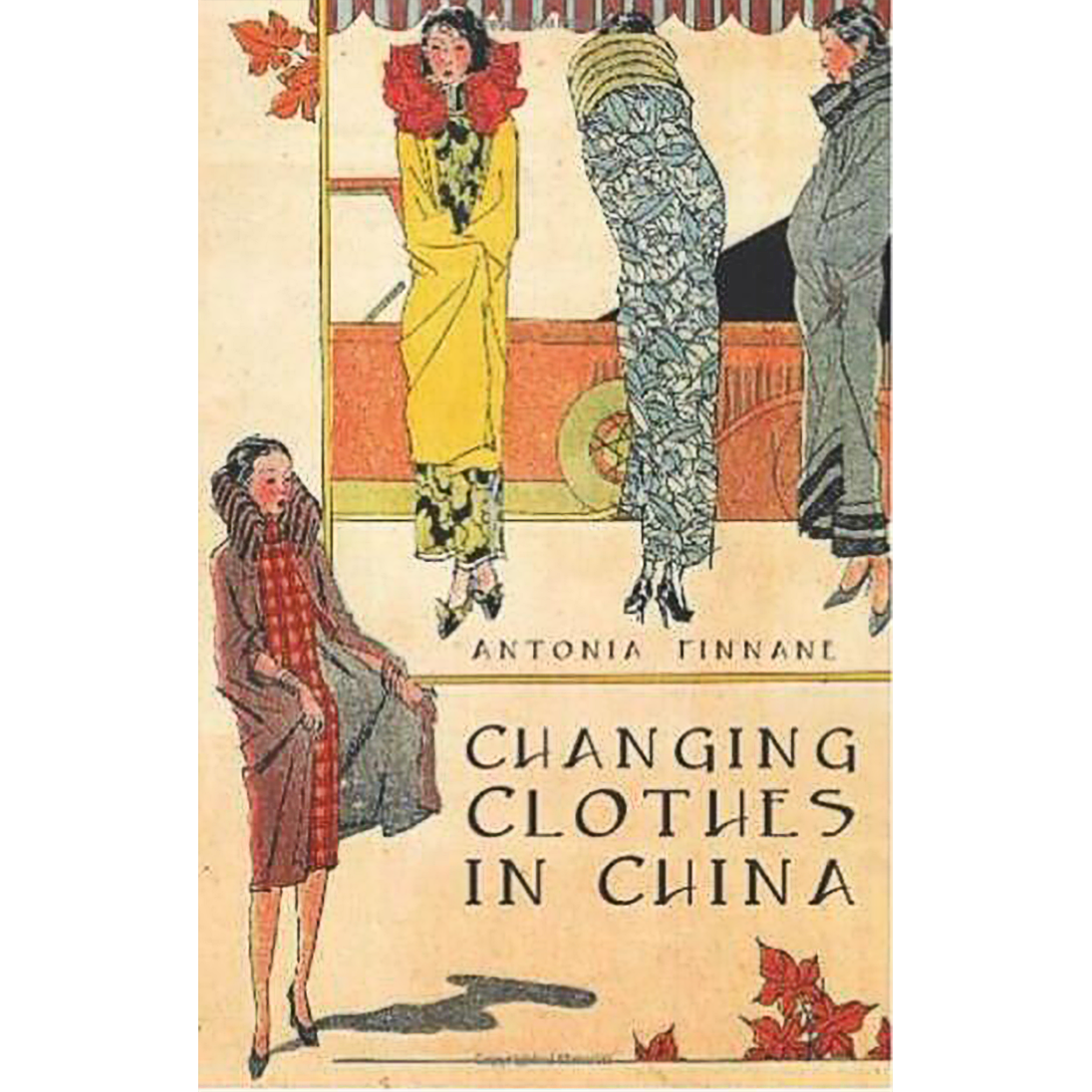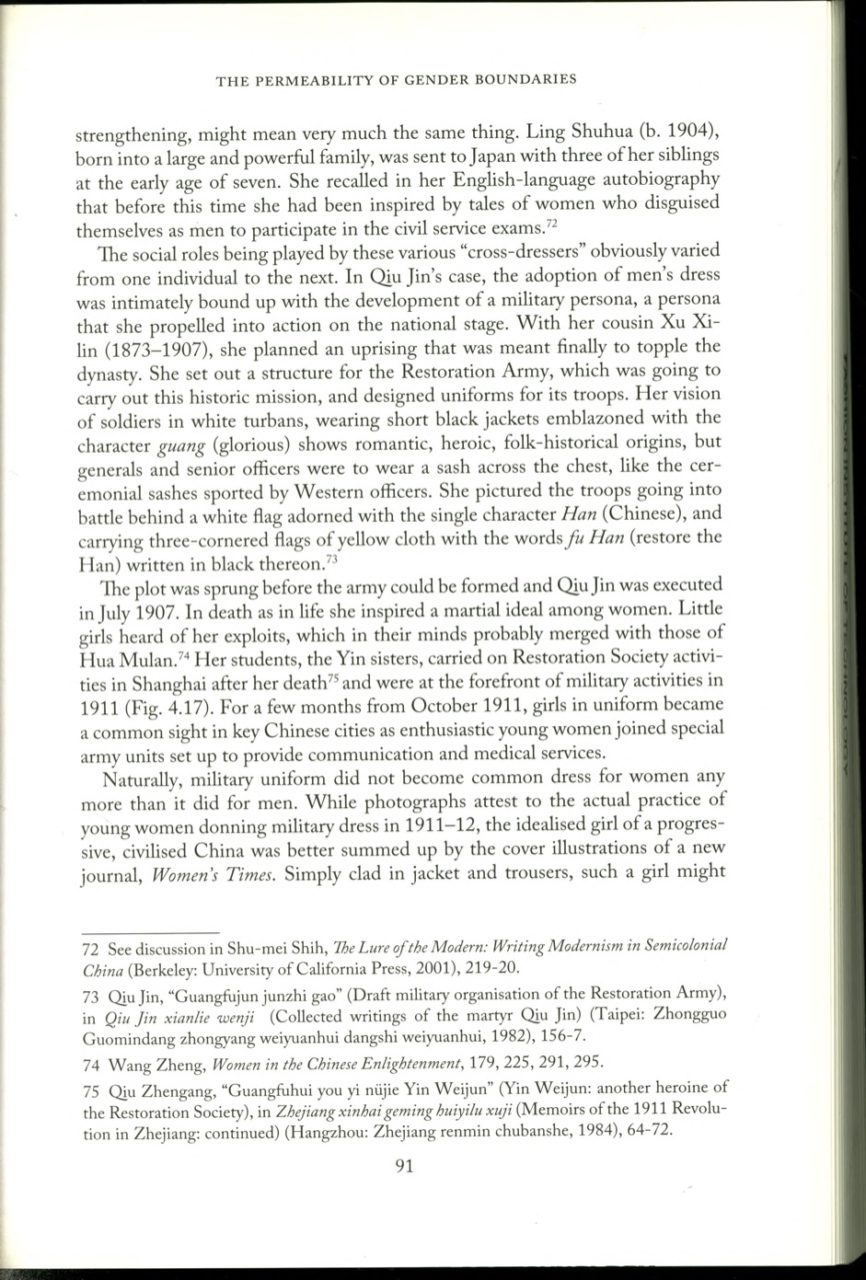Changing Clothes in China: Fashion, History, Nation (2008)
Based largely on nineteenth and twentieth-century representations of Chinese dress as traditional and unchanging, historians have long regarded fashion as something peculiarly Western. But in this surprising, sumptuously illustrated book, Antonia Finnane proves that vibrant fashions were a vital part of Chinese life in the late imperial era, when well-to-do men and women showed a keen awareness of what was up-to-date.
Though foreigners who traveled to China in the early decades of the twentieth century came away with the impression that Chinese dress was simple and monotone, the key features of modern fashion were beginning to emerge, especially in Shanghai. Men in blue gowns donned felt caps and leather shoes, girls began to wear fitted jackets and narrow pants, and homespun garments gave way to machine-woven cloth, often made in foreign lands. These innovations marked the start of a far-reaching vestimentary revolution that would transform the clothing culture in urban and much of rural China over the next half century.
Through Finnane’s meticulous research, we are able to see how the close-fitting jacket and high collar of the 1911 Revolutionary period, the skirt and jacket-blouse of the May Fourth era, and the military style popular in the Cultural Revolution led to the variegated, globalized wardrobe of today. She brilliantly connects China’s modernization and global visibility with changes in dress, offering a vivid portrait of the complex, subtle, and sometimes contradictory ways the people of China have worn their nation on their backs.
More Information
Description
New York : Columbia University Press Creation, 2008
Format: xvii, 359 pages : illustrations (some color), maps (some color) ; 25 cm
ISBN : 9780231143509 0231143508
OCLC: 84903948
Table of contents
Table of contents
Acknowledgements
List of Illustrations
CONTENTS
1. Introduction: Fashion, History, Nation
Fashion, history and early modernity
Fashion and national politics
2. Ways of Seeing
Early modern commentaries
Qing Costume
Footbinding and the status of Chinese civilisation
Cultural relativism and vestimentary practices
Gender differentiation in cultural relativism
Conclusion
3. Fashions in Late Imperial China
Signs and symptoms of Ming fashions
Changing styles of womens dress
Qing fashions: the example of Yangzhou
Fashion, the times, and the world
Fashions in the 1840s
Fashion, fiction and modernity
4. Soldiers and Citizens
A new uniform for a new army
The militarisation of civilian dress
Campaigning against the queue
The fashionable effects of natural feet and education
The permeability of gender boundaries
Towards “xinhai”fashion
Citizens ofthe Republic
About the author
About the author
Antonia Finnane is a graduate of the University of Sydney (first-class honours in history), and the Australian National University, with a PhD in Chinese history. Her early research was in the area of urban history, the focus of her prize-winning book, Speaking of Yangzhou: A Chinese City, 1550-1850 (Harvard, 2004).
External links
External links
Worldcat: Click here
FIT Library: Click here
Webpage for the book: Click here
Author Website/University Faculty page: Click here
Book Reviews
Book Reviews
Culp, Robert. The Journal of Asian Studies 68, no. 3 (2009): 934-36. Accessed January 12, 2020. www.jstor.org/stable/20619804.
Edwards, Louise. “ANTONIA FINNANE. Changing Clothes in China: Fashion, History, Nation. New York: Columbia University Press. 2008. Pp. xvii, 359. $35.00.” The American Historical Review, Volume 114, Issue 3, June 2009, Pages 736–737, https://doi.org/10.1086/ahr.114.3.736






